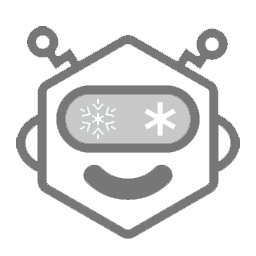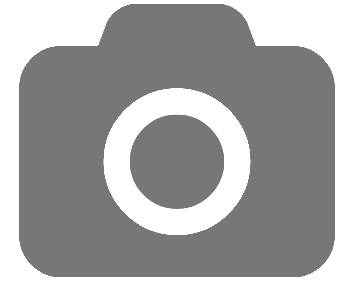Edit: Thank you to the 100k people who have read this piece. Writing continuously surprises me in just how far it can reach. Learning to write in a way that will make people listen is a powerful skill that I hope all people gain access to. Happy writing! - SS
If you told me 5 years ago that I would one day lead a 20-person Publications team or have a personal blog that’s read by hundreds of thousands, I would’ve laughed in surprise. Yet somehow, I’ve found myself in that reality. Here we are.
People often ask how I approach writing, so I decided to share this piece to sway the self-conscious writer inside each one of us. I hope it encourages others to develop a practice that enables them to write with confidence, by simply sharing how I’ve designed my own.
“Self-doubt can be an ally. This is because it serves as an indicator of aspiration. It reflects love, love of something we dream of doing, and desire, desire to do it. If you find yourself asking yourself (and your friends), "Am I really a writer? Am I really an artist?" chances are you are.” - The War of Art
Practice Makes Possible
Growing up, English was my least favourite subject by far. In fact, I grew up in Ontario, which mandated that only a single subject must be taken all the way through secondary school. And of course, it was English. I remember thinking﹣as any teenager would﹣that the world was a deeply unfair place. I would happily pile on some additional Calculus or Chemistry, but the thought of another year in English made me want to cry (and probably did at some point).
Anyone that struggles with writing (or any creative pursuit, really) knows that when it doesn’t feel right, it’s not something that you can force. And if you do, you end up with a blank slate covered in word vomit.
But what most people don’t realize is that the resistance to writing is not unlike the resistance to other skills. And the antidote? Practice. Exposure. Iteration.
Practice makes any seemingly impossible task familiar. You can learn to write.
So since the days of braces and locker accessories, I’ve learned to write in a way that isn’t so scary. And the more I write, the more I feel the flywheel effect in action. I hope this article inspires the writer inside each person reading this, through the understanding that writing is a skill that can be acquired through continuous effort, easily accessed by creating a process with less friction.
Writing is Thinking
The first step to becoming “a writer” is acknowledging that no metric defines someone as “a writer”. And that anyone unabashedly claiming to be an expert, is likely far from it. You know what makes you a writer? Writing.
"Each time you write a page, you are a writer. Each time you practice the violin, you are a musician. Each time you start a workout, you are an athlete. Each time you encourage your employees, you are a leader." - Atomic Habits
Writing, just like all else, is a muscle that can be flexed and built up into a habitual process that eventually flows. Because at its core, writing is simple: it’s a method of sharing your thoughts.
What most people don’t realize is that it’s often not actually the writing that is difficult. It’s the thinking behind the writing.
“Writing is thinking. To write well is to think clearly. That's why it's so hard." - David McCullough
Writing is essentially a robust tool that enables us to clarify and communicate our thoughts. While writing, you are forcing yourself to think critically and exercise parts of your brain that are typically on auto-pilot. As Einstein once said, “If you can't explain it simply, you don't understand it well enough.” In attempting to formulate a written piece, you are going through the exercise of transforming vague ideas into clarified concepts externally, but also internally.
But what is often overlooked is the fact that having a clarified, unique, and thoughtful point of view greatly reduces the mental load required to write in the first place. So which is the chicken and which is the egg?
"It’s through writing that we exercise our ability to think; they’re not mutually exclusive tasks." - Grammarly
Writing and thinking are two peas in a powerful pod. Critical thinking leads to good writing, which leads to clearer thinking, and so on. By improving your writing, you are also improving your ability to think and vice versa. So then the question then becomes, how does one activate this process?
Reducing Activation Energy
The thinking <> writing (TAW) cycle described above is powerful, but also lofty. If I were to ask you to wake up tomorrow and have a finished article by EOD, I’m diminishing the mental load of you taking on two tasks: (1) the process of ideation and (2) the difficult task of abstracting these concepts into something that does your ideas justice. Almost certainly, one would be sacrificed across this short timeline. Most often, the focus on “producing an article” results in a majority of energy going into the output (2), without properly formulating the “why” behind an article (1), thereby making the writing process more painful overall. It’s the TAW cycle with a whole lot of friction, because you only have one turn around the wheel.
So my solution is simple: I separate the two and exercise the cycle many times over.
It’s extremely rare that I’ll come up with a concept and knock out the piece in one sitting. And I do this for a very specific reason: if I were to hold myself to that standard, I would never even make it to the drawing board. I’ve designed my writing process to embrace the practice of writing (and thinking), with a focus on reducing the activation energy to show up in the first place.
My Writing Process
Writing is by nature, a very personal and subjective process. So, if you take anything away from this article, it is not the specific steps that I’ve identified, but instead an ethos enabling you to craft your own.
To start, I would ask yourself the question, “What environment can I create that will make it most likely for me to show up to this task?”
For me, that has come down to two things:
- Decoupling
- Optimizing for one variable
Decoupling the Writing Process
As mentioned above, I intentionally separate out my process into multiple steps: 6 to be exact (more on this below). I do this to utilize my energy levels optimally, across active and passive states. I don’t always have the mental energy to hard-core execute (active), so I allow myself to constantly and passively conceptualize, without too much pressure. The process is designed such that when I’m ready to enter an active state, like a focused writing session, I’ve already established a clear line of thinking.
Writing Process Steps:
- Ideation - Passive
- Tracking - Active
- Outline - Active
- Idea Arbitrage - Passive
- Research - Active
- Writing - Active
While this ping-pong between passive and active states may seem chaotic to some, it is exactly what enables me to get things done without feeling overwhelmed.
There’s a great tool called Draftback, which essentially lets you “go back in time to look over your own shoulder as you write”.
✍ Been loving the Draftback Chrome extension to reflect on my writing process by literally watching it.
— Steph Smith (@stephsmithio) September 3, 2019
This was my How to be Great article (https://t.co/xJuoyigh0O) fast-tracked into 90 seconds.
📌 Extension: https://t.co/1mlla7LDDS pic.twitter.com/k8OoT9c4Mm
I use the tool to reflect on my process and understand how I iterate through an article. Naturally, I’ve also used it to consider how I might improve my process.
For example, this article (the one you’re reading), was created over a period of over a month where I would go back and forth between thinking and writing, until I finally had solidified what I was trying to say. It took over 19k revisions.
Another article that I wrote, literally took six months and many, many more writing sessions.
I’m not necessarily encouraging others to iterate this many times, and if anything I’m trying to scale back my edits, but it shows that the writing and thinking process takes time to get right.
Optimizing for One Variable
I’ve learned to accept that you can’t have everything in life. That sentiment permeates into writing.
In my opinion, writing should never be something that you do just to check off of your to-do list. At its core, writing is a mechanism to try to deliver value to others. And over time, I’ve defined that as my core goal.
In order to achieve this, I have to come to terms with trading off other variables like speed. As mentioned, many of my articles take weeks, while others sometimes take months.

This clearly isn’t always to my advantage, but it gives me something to orient around. If I tried to optimize completely across quality, speed, SEO-potential, among other variables, I would get paralyzed. So instead, I focus on one thing: quality.
If you’re in a similar place of liberty to work on articles at your own pace, you may also consider making quality your north star. The point here isn’t that you need to choose the same north star, but to establish one that you form your process around. On that note, let’s jump into my writing process.
How I Write: 6 Steps
Step 1) Ideation: Passive
The first step in my process is intentionally passive. In order to get my TAW loop going, I set an open invitation to my brain to take note of anything interesting. More specifically, I look for anything within the intersection of: (1) interesting, (2) doesn’t exist online in that exact form, and (3) something I can contribute uniquely to.
With the barrier to entry to launching a blog or publish an article these days being so low, there is candidly a lot of crap out there. Before jotting down an idea, I ask myself, “Does this exist on the internet today?” and if not, “Should it?”. If I can answer those questions with confidence, I’ll consider pursuing the piece. For the same reason that I will never drop ship plastic goods that no one needs, I will never publish an article that I don’t truly believe can benefit others.
It’s not just about being considerate. It’s much harder to get attention on an article that is the same as thousands of others on the Internet. It’s also hard to write a good article about something you don’t care about (that’s why writing was such a draining task in school). So you can do yourself, along with the rest of the world, a favour by simply considering, “What is something that I can uniquely contribute?”.
For example, I don’t need to tell the world that remote work is growing﹣we have enough people doing that. But perhaps it would be helpful for me to talk about how someone with a non-technical background might find a remote role. I’ve been through multiple of these roles myself, hired a couple dozen non-technical remote teammates, and have spent years thinking about the topic.
Anything that checks the right boxes will get the TAW cycle started, but I still won’t try to force it. In a few cases, I’ll sit down and write up a full draft. But for most, this step is simply adding the concept in a new Google doc.
What actually goes into the document varies significantly. Sometimes, it’s as little as a single line or link. Below are two examples, where you can see that article concepts often start out super basic and often unclear.
These ideas for these articles come from absolutely everywhere. Conversations, books and articles, personal experiences, and random Google searches have all generated inspiration for pieces.
You know when you’re younger and someone disagrees with you, so they ask you to rattle off examples supporting your argument? Put on the spot, you feel stuck and unable to think of any, despite knowing there are many. The same would be true if I asked you to come up with 10 great article topics on the spot. Allowing yourself to catch onto signals passively is the most sure route to accumulating a lovely cabinet of concepts.
For example, the impetus behind some of my articles came from the following:
| Article | Inspiration |
| How to Be Great? Just Be Good, Repeatably | Internal frustration about my progress mid-year. |
| Finding Top Talent: Stop Looking Inside a Box for People Thinking Outside of One | Inspired by a company that wanted to hire me, but wouldn’t allow remote work. |
| Step by Step: Setting Up Ghost with a Digital Ocean Droplet | Spending hours figuring out how to set up the droplet, so I figured that I could help others do the same. |
| The Guide to Remote Work That Isn't Trying to Sell You Anything | Reading so many articles online that inaccurately reflected a rosy picture of remote work and wanting to paint a more accurate image. |
| When Do You Become a Developer? | Conversations with more experienced developer friends. |
| A New Age: Finding Non-Tech Remote Jobs | Friends asking how they can switch to remote work, without technical experience. |
Step 2) Tracking: Active
The next step is tracking, which is basically just adding the idea to my ongoing spreadsheet. But more importantly, I’ll typically take the opportunity to quickly do some keyword research. This is for two reasons:
- I want to see if the article has the potential to rank. Even though SEO is a fancy word for a not-so-fancy industry, keyword research is essentially a mechanism to see if this is something people are actually looking for. If there is no search volume, yet I still think it can deliver value, I’ll write it anyway. But I want to be cognizant of this: Google processes billions of queries and if there is literally no search volume, I need to be able to justify why this might be.
- I also do keyword research at this stage to spot secondary keywords that may influence the outline I create next. I make sure to do it at this stage, because I’m not a fan of keyword stuffing, but I do believe in Google is a big data mine to understand what people want to know. If I incorporate those signals into the outline, I’m not only more likely to bring in more traffic, but genuinely deliver a better article serving people’s needs.
I could and probably will write an entire article (or 10) on how I approach SEO research, but for the purpose of this article, I’ll just share that I use these tools: Ahrefs, Keyword Planner, and Keywords Everywhere.
Step 3) Outline - Active
At this point, I’ll utilize the mix of my (rough) ideas and SEO research to create an outline. It’s always in bullet-point form and will have approximately 3-6 major headings, with sub-points underneath.
It’s important to start the outline at this stage, as this will set the stage for the next step of passive “idea arbitrage”.
Step 4) Idea Arbitrage - Passive
After creating an outline, I enter the fourth stage: Idea Arbitrage﹣my personal favourite. Despite the ridiculous name I’ve chosen for this stage, I ultimately feel as though this is the part of my process which makes my articles stand out.
In this stage, I simply let the article sit. I let the creative juices in my passive brain marinate and be stimulated by just about anything.
If I run into an interesting tweet or quote or tidbit from an article, I’ll make sure to add it to the right outline. I do this for literally weeks or even months, until I feel like I’ve crafted a unique point of view.
To augment this process, I love using two tools: Readwise and Weava highlighter.
- Readwise syncs all of my Kindle quotes (now over 1000 highlights across 20+ books). Prior to Readwise, I literally would take time and type these into a Google sheet. But now, it’s a seamless “Sync highlights” click and a delightful UI to sift through them. I’ll typically go through new quotes monthly and add them to the respective outlines that are in the passive idea arbitrage stage.
- Similarly, when I am reading an online article and a particular quote sticks out to me, I’ll utilize the Weava highlighter to store the thought and return to them periodically. In addition to augmenting my writing process, this practice helps with reading retention.
An important note: when I first started doing this, I would just blindly toss ideas into Evernote, but that required a whole lot of cleanup when I started writing the piece. With the new process of setting up the outline from the outset, I’m instead actively filing this information where needed. It’s my own personal Dewey Decimal system, so that when it comes down to writing a piece, I have a beautiful library to operate off of.
Step 5) Research - Active
Often, a piece needs more than a few tweets or quotes to truly have authority. So, I typically augment an article with at least a few hours of active research. This stage closely mimics the research that one would do to write a college essay, but this only happens once I’ve done quite a bit of passive ruminating, so that I have a clear POV of what I want to convey. I thoroughly enjoy this phase, as it allows me to “write to learn”; to build my articles off of not just my intuition, but the amazing work of others.
“To write a great book, you must first become the book.” - Atomic Habits
Step 6) Writing - Active
Finally, it’s time for the hard part: writing.
I’ll typically only sit down to really craft a piece once I have at least a few thousand words of what I’ve started to call “notes ‘n quotes”. The reason I do this is simple: I am not a natural writer. Putting words down on paper sometimes comes naturally to me, but often it does not. And that means that in order for me to consistently write, I need to make it as easy as possible for me to build the habit; I need to lower the activation energy to start.
“When scientists analyze people who appear to have tremendous self-control, it turns out those individuals aren’t all that different from those who are struggling. Instead, “disciplined” people are better at structuring their lives in a way that does not require heroic willpower and self-control.” - Atomic Habits
If I’m sitting down to a blank slate of pixels, you better bet my brain sets off an alarm that “This will be hard and grueling and you can’t do this, Steph!”. But if instead, I’m sitting down to an outline that I’ve been passively ruminating on, that’s supported by concrete examples, it doesn’t seem so bad. I’m effectively approaching the writing phase, with maybe 7/10 of the work already completed.
Had I decided to write an article from scratch in a day, not only would the end result be more shallow, it would freak me the f*** out. And quite frankly, I just wouldn’t do it. In effect, I’m trying to be patient with my own psyche and set up an environment that makes me most likely to get started.
“There's a secret that real writers know that wannabe writers don't, and the secret is this: It's not the writing part that's hard. What's hard is sitting down to write.” - The War of Art
When I am struggling to put words on paper, I’ll ask myself the following questions:
- How would I explain this to a friend? This helps me discern whether I’ve actually spent enough time thinking through the core concepts. Remember, writing is thinking.
- What specifically are you getting hung up on? I find that sometimes I can get caught up in certain problematic routines. For example, if I created an outline with a ton of info, sometimes I struggle to strip some of it out. If I reflect and catch myself doing this, I will more readily cut things out.
This is the only phase where I will set time limits. Not because I have deadlines, but because I’m trying to improve my “finishing muscle”. To this day, I still have over a dozen articles that I almost finished, but did not. And there’s a clear course across all of them. I got maybe 80-90% there, but since I didn’t finish them completely, the Lindy effect only becomes more material.
So while not always possible, once I start the active writing process (Step 6), I try to close out the article in that particular session, get my little hit of dopamine, and then move on.
“Resistance is most powerful at the finish line” - The War of Art
Personal Disclaimer
It’s important to note that this is my personal style of researching and writing, built upon the constraints (or lack thereof) within my life; most markedly that this is a personal blog. I don’t have deadlines or an editor to impress. Instead, my north star is delivering articles I’m proud of. In all honesty, this process almost certainly would not work in a paid writing environment solely due to turnaround expectations, but as an independent writer, I love the flexibility it gives me to create content that I'm happy to put my name on.
It’s also worth noting that because I’ve been doing this for a while, I have over 50 pending articles at some stage in the process. I estimate that for every article I publish, a few new article ideas spring to mind, so I’m never really jaded or in search of something to write. I view this entire process as a way to formulate, process, and share my ideas, but I’ve found that a byproduct has been that it helps me think more clearly. As I go through the weeks or months of dwelling on the core takeaways of a given article, I learn to transform what are sometimes vague and lacking concepts into tactile, digestible pieces.
As such, I’ve started to use the very process for a book that I hope to write: Thinking in Curves. It’s currently in the Idea Arbitrage state (and been there for months). :)
Just Do It
In hopes that you will go out there and write, I encourage you to focus on the process and not the outcome. Many of your articles, as many of mine are, will be flops. Even some of your best may never get noticed.
The best way to improve your writing skills is to write (and to write a lot). If you’re focused on a process that helps you build new skills, most notably your ability to parse and process information tactfully, you cannot lose.
With any skill that you hope to acquire, there is no magic moment. It’s a never-ending process of going from good to great. And certainly with writing, a post will never write itself, so it’s up to you to keep yourself accountable.
At the end of the day, there are few things more rewarding than looking back at a collection of work that you’ve delivered to the world that is indeed all your own. So get out there, design a process that works for you, and push forward with no intention of an expiry date.
“The professional has learned that success, like happiness, comes as a by-product of work.” - The War of Art
Recommended Reading:
Recommended Research Tools:
Recommended SEO Tools:
PS: If you liked this article, I have a feeling you'll enjoy this podcast episode about rethinking productivity and how to get more done.
PPS: You might also enjoy other episodes about all types of things like tip culture, technology people feared, or the the most influential artist you've never heard of on my podcast or my latest project.












